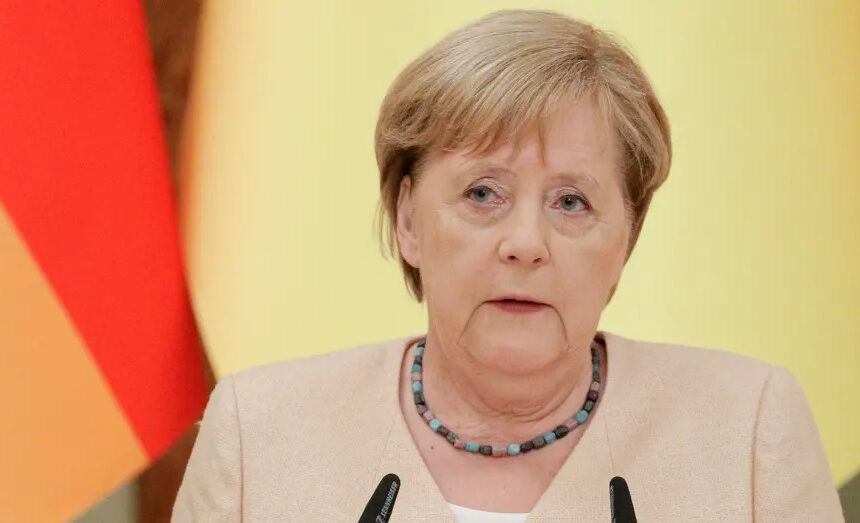$7.53 – that is the price per gallon these days when Germans try to fill their tank. Gas prices have been on the rise around the world, but no major country in the West has seen the same astronomic price hikes in gas, electricity, and other sources of energy prices in the last few years as Germany. While many point to Russia’s invasion of Ukraine as the culprit, this explanation proves to be short-sighted. Even before the war, Germany’s energy prices only trailed Denmark.
>>>READ: Germany and California’s Nuclear Mistakes
While Russia is partly to blame for causing turmoil in global energy markets, Germany truly has only itself to blame for its energy debacle. In the last decade, in an attempt to become the global leader in clean energy, Germany has become fully dependent on autocrats in the east, while failing to improve the environment. Germany’s top-down Energiewende, or ‘energy transition’ is a prime example of centralized decision-making in the name of the environment gone terribly wrong.
Until a decade ago, most of Germany’s energy came from oil, coal, gas, and nuclear energy. As for the latter, nuclear energy provided 22.5 percent of the country’s electricity up until 2010 (and accounted for more than 30 percent until the turn of the century). As the fight against climate change became a growing concern all around the world, it also became increasingly obvious that the reliance on fossil fuels could not sustainably be upheld.
And yet, in the wake of the 2011 Fukushima crisis, Chancellor Angela Merkel made a monumental, yet awfully impulsive and imprudent decision, shutting down all nuclear power plants by 2023. Germans always had a somewhat irrational fear against nuclear energy and Fukushima supposedly proved them in the right. It did not matter that a safety inspection proved that all German nuclear plants were safe. The plants would need to shut down nonetheless, and an ‘energy transition’ would need to be implemented immediately.
Thus commenced a costly and environmentally ignorant affair that has continued ever since. Massive subsidy programs for solar and wind energy have been introduced on the back of taxpayers’ money. While electricity prices had declined in theory over the last years, electricity prices in Germany shot up by 87 percent since 1998 thanks to a 303 percent increase in energy taxes that has financed renewable energy projects. These costs have primarily affected small businesses and individuals. Big corporations got an exemption, only having to pay parts of the newly introduced surcharges. Today, private customers pay one-third of the costs even though they only use a quarter of the electricity.
In the meantime, solar and wind energy slowly developed and became an established part of the energy mix. But as nuclear energy generation took a stark downturn, renewables have not been able to fully replace it, if only because the production is dependent on external forces in a way that nuclear isn’t. A backup was needed for when the sun wouldn’t shine or the wind wouldn’t blow strong enough. Coal could not be the backup; it had rightfully become anathema in the fight for a cleaner future. It could also not be gas, especially after Germany had led the way in the European Union to prohibit fracking (although this did not prevent Europe from importing fracked gas from the U.S. when an energy crisis had become imminent in the last few months).
>>>READ: Let’s Remind Ourselves Again: Nuclear Energy Is Safe
Only one avenue remained, and that avenue needed to be paved straight to Russia with the Nord Stream 2 line. Importing gas from Russia made sense economically, as it was up to ten times cheaper than other alternatives such as Norway or Qatar. Thus, compromises and sympathies with the Russian government continued even when Putin increasingly showed his true intentions of invading Ukraine. These intentions were ignored, dreaming instead of a beautiful future of easy gas thanks to the friendly neighbors in the east.
The results after ten years of Energiewende paint a bleak picture. Rather than having become cleaner, Germany’s energy mix is still relatively similar to where the country started. The only major change has been that nuclear has been phased out, having been replaced by renewables. The fossil fuel reliance has remained, both internally and from Russia. In the meantime, the economic, geopolitical, and environmental costs have been immense.
Germany’s energy policy has been one of the greatest top-down, centralized policy experiments in Europe over the last decades. But this experiment has hardly borne fruits, neither for nature nor for the economy. It should serve as a stark warning for all those advocating for Green New Deals and for those arguing that only government can solve climate change: bottom-up leadership, not top-down mandates, offer us the most effective pathway to reduce emissions in an economically and environmentally-feasible way.
Kai Weiss is a Research and Outreach Coordinator at the Austrian Economic Center, and author of Green Market Revolution: How Market Environmentalism Can Protect Nature and Save the Planet.
The views and opinions expressed are those of the author’s and do not necessarily reflect the official policy or position of C3.
